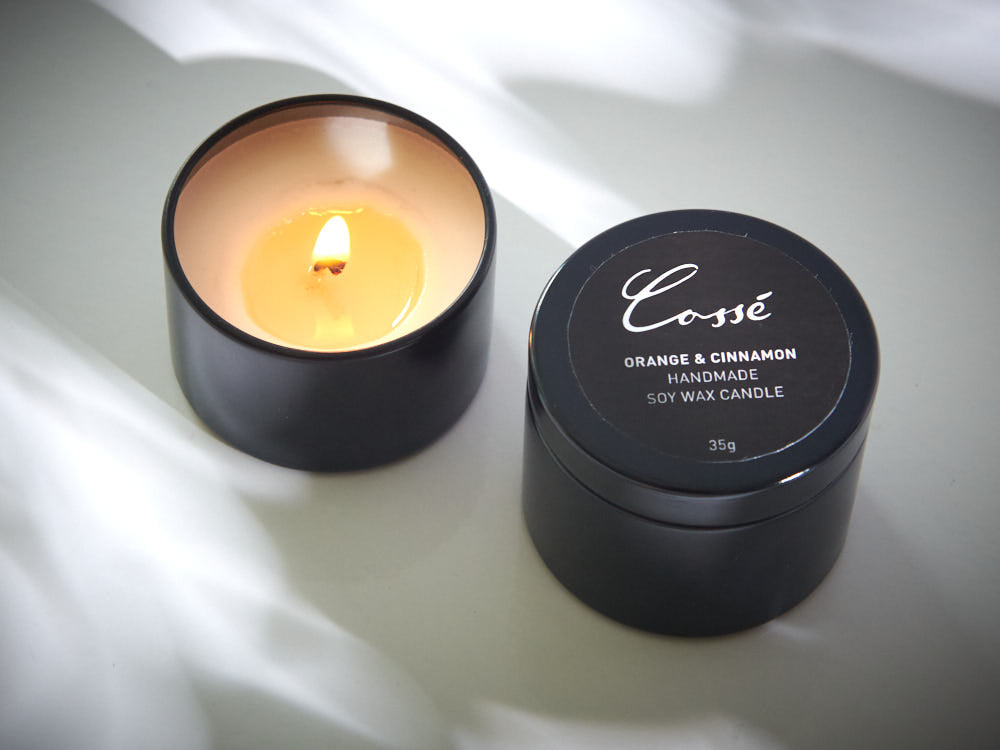Discover the Globe of Crystal Soy Candles and Home Fragrance Thrills
Wiki Article
From Wick to Wax: Recognizing the Chemistry Behind Soy Wax Candles and Their Environmental Influence
As we illuminate our rooms with the warm radiance of candle lights, there lies a realm of intricate chemistry behind the seemingly straightforward act of lighting a soy wax candle light. The selection in between soy and paraffin wax prolongs past mere visual appeals, diving right into the realm of environmental influence and the extremely make-up of the materials. Recognizing the molecular structure of soy wax and its burning procedure clarifies the discharges launched into our environments. Join us as we untangle the clinical intricacies behind soy wax candles and explore their effects on our atmosphere.Soy Wax Vs. Paraffin Wax
When comparing soy wax and paraffin wax for candle making, it is important to recognize the distinctive features and advantages of each product. Soy wax is a natural, renewable energy derived from soybean oil, making it environmentally friendly and naturally degradable - soy candles. In contrast, paraffin wax is a byproduct of oil refining, which elevates concerns about its ecological influence and sustainabilitySoy wax candle lights burn cleaner and send out much less soot compared to paraffin wax candles, making them a healthier choice for interior air high quality. Additionally, soy wax has a reduced melting point, enabling a longer-lasting candle light that disperses scent better. Paraffin wax, on the various other hand, has a tendency to melt faster and much less easily, potentially launching dangerous chemicals right into the air.
From a sustainability perspective, soy wax is favored for its biodegradability and eco-friendly sourcing, straightening with the growing customer preference for ecologically aware products. While paraffin wax has actually been a traditional choice in candle light making because of its affordability and convenience of use, the shift towards eco-friendly alternatives like soy wax is obtaining energy in the market.
Chemical Composition of Soy Wax

Burning Refine in Soy Candles
The chemical composition of soy wax straight affects the combustion process in soy candle lights, impacting aspects such as burn time, fragrance launch, and environmental impact. When a soy candle light is lit, the warmth from the flame melts the wax near the wick.
The combustion performance of soy candles is affected by the pureness of the soy wax and the high quality of the wick. A clean-burning soy candle with a correctly sized wick will lessen and create a consistent flame soot formation. This not only extends the melt time of the candle light yet likewise boosts the release of fragrances. Furthermore, soy wax candles have a lower environmental impact compared to paraffin candle lights because of their naturally degradable and sustainable nature.

Environmental Benefits of Soy Wax

Taken into consideration a sustainable option to standard paraffin wax, soy wax uses notable ecological benefits that make it a prominent option among eco-conscious customers. Soy wax burns cleaner and produces much less soot than paraffin wax, adding to far better indoor air top quality and reducing the requirement for cleansing and maintenance. In general, the ecological benefits of soy wax align with the growing need for sustainable and eco-friendly items in the market.
Recycling and Disposal Factors To Consider
Reusing and appropriate disposal of soy wax candles play a vital duty in keeping ecological sustainability and reducing waste in houses and neighborhoods. When it involves recycling soy wax candles, the initial step is to make sure that the candle light has shed completely. This can be accomplished by allowing the candle light to burn till the wick is no longer useful, and after that letting the remaining wax cool and strengthen. As soon as the wax has strengthened, it can be thoroughly gotten rid of from the container.
In regards to disposal, if recycling is not a choice, soy wax candles are naturally degradable and can be crystal soy candles securely disposed of in a lot of home waste systems. It is always advised to examine with local reusing facilities or waste administration services for details guidelines on candle disposal to ensure appropriate handling and environmental security.
Verdict
Finally, the chemistry behind soy wax candle lights reveals their environmental benefits over paraffin wax candle lights. Soy wax, obtained from soybean oil, burns cleaner and produces less residue when compared to paraffin wax. The combustion procedure in soy candle lights is much more reliable, causing a much longer and extra also shed. Additionally, soy wax is biodegradable and eco-friendly, making it a much more lasting selection for candle manufacturing. Recycling and correct disposal of soy wax candle lights better contribute to their environmental effect.When comparing soy wax and paraffin wax for candle production, it is vital to understand the distinctive attributes and advantages of each product (soy candles).Soy wax candle lights shed cleaner and give off much less soot contrasted to paraffin wax candle lights, making them a much healthier choice for indoor air quality.Thought about a sustainable alternative to standard paraffin wax, soy wax supplies notable ecological advantages that make it a popular selection among eco-conscious consumers. Soy wax burns cleaner and produces less soot than paraffin wax, contributing to better interior air high quality and lowering the demand for cleaning and upkeep.In conclusion, the chemistry behind soy wax candle lights exposes their ecological benefits over paraffin wax candle lights
Report this wiki page